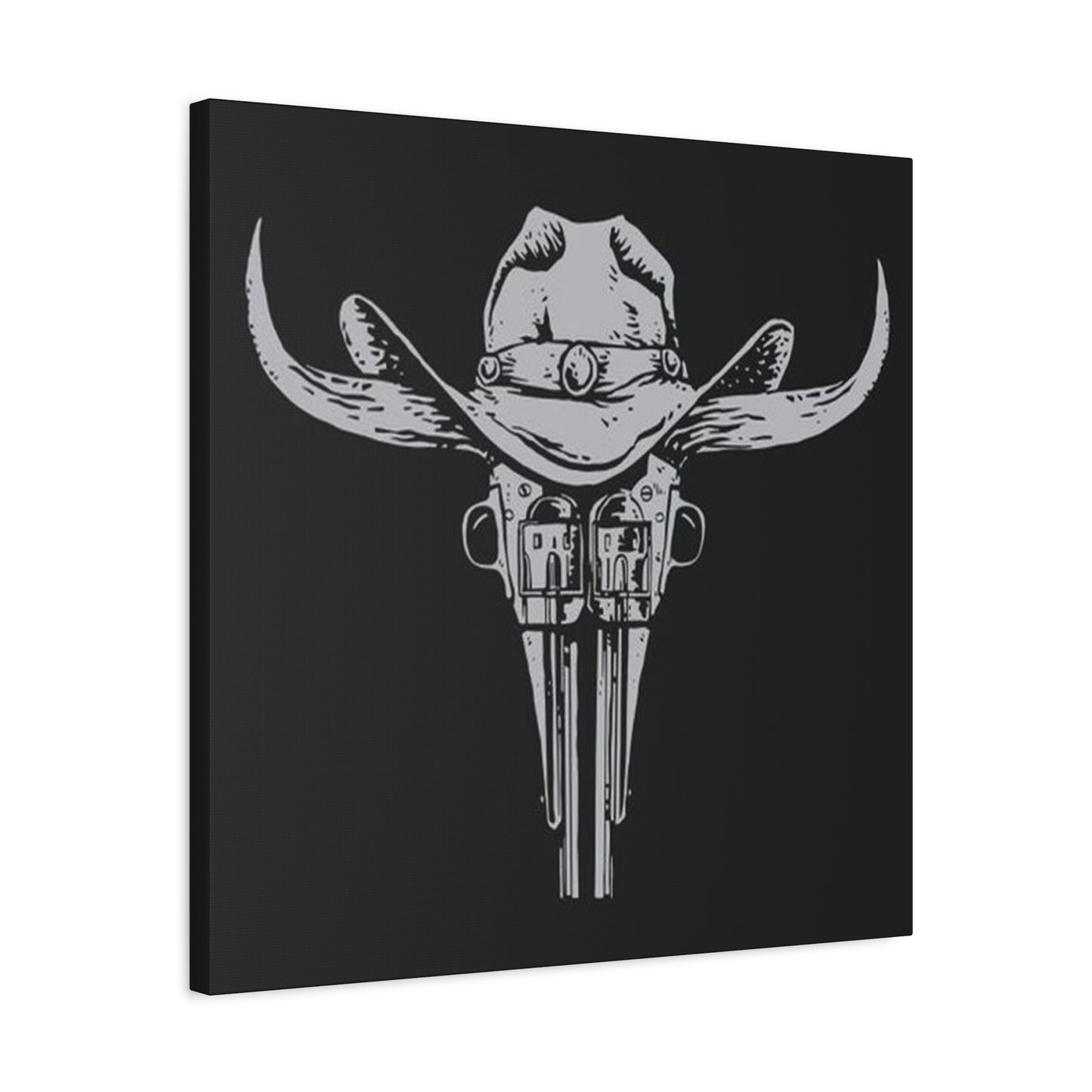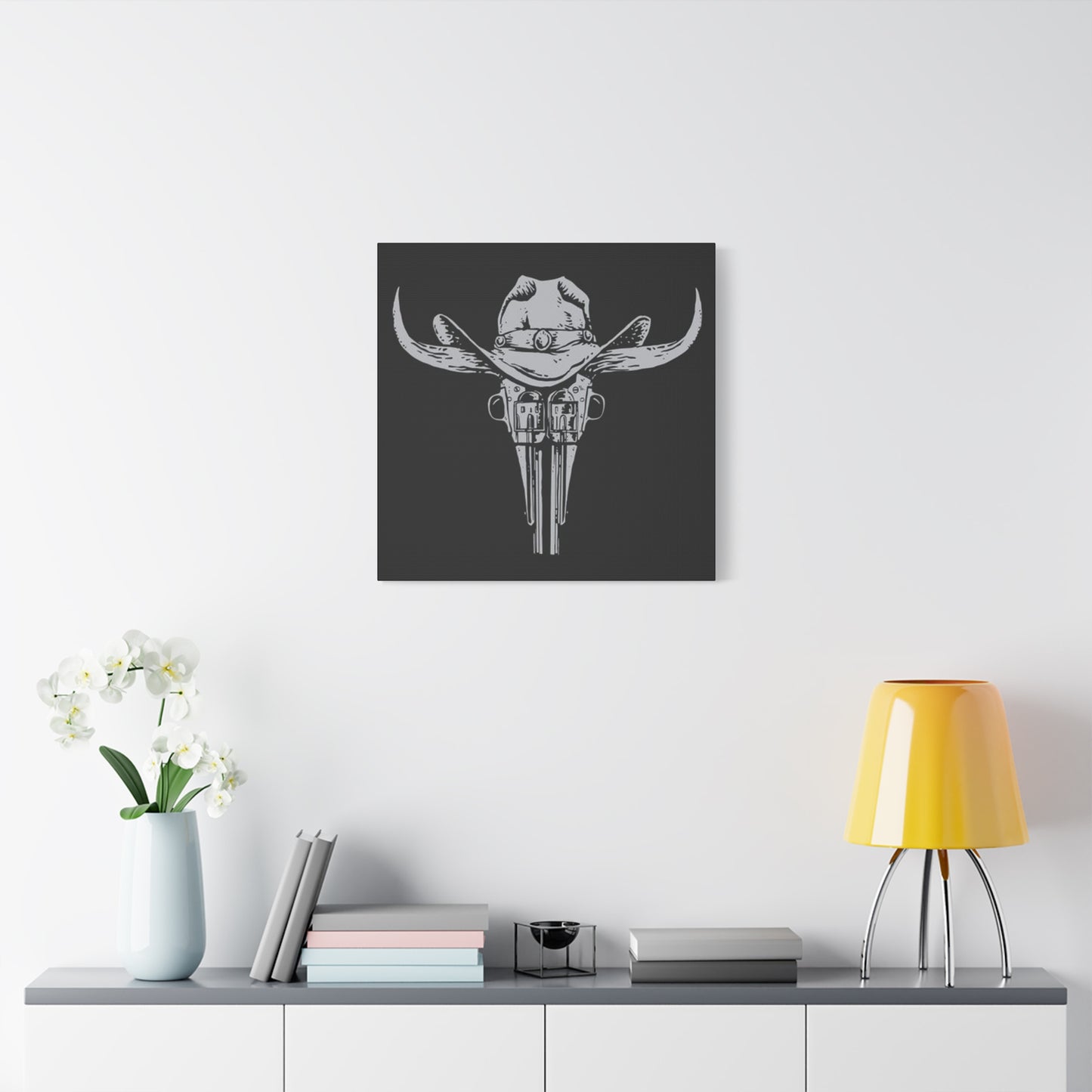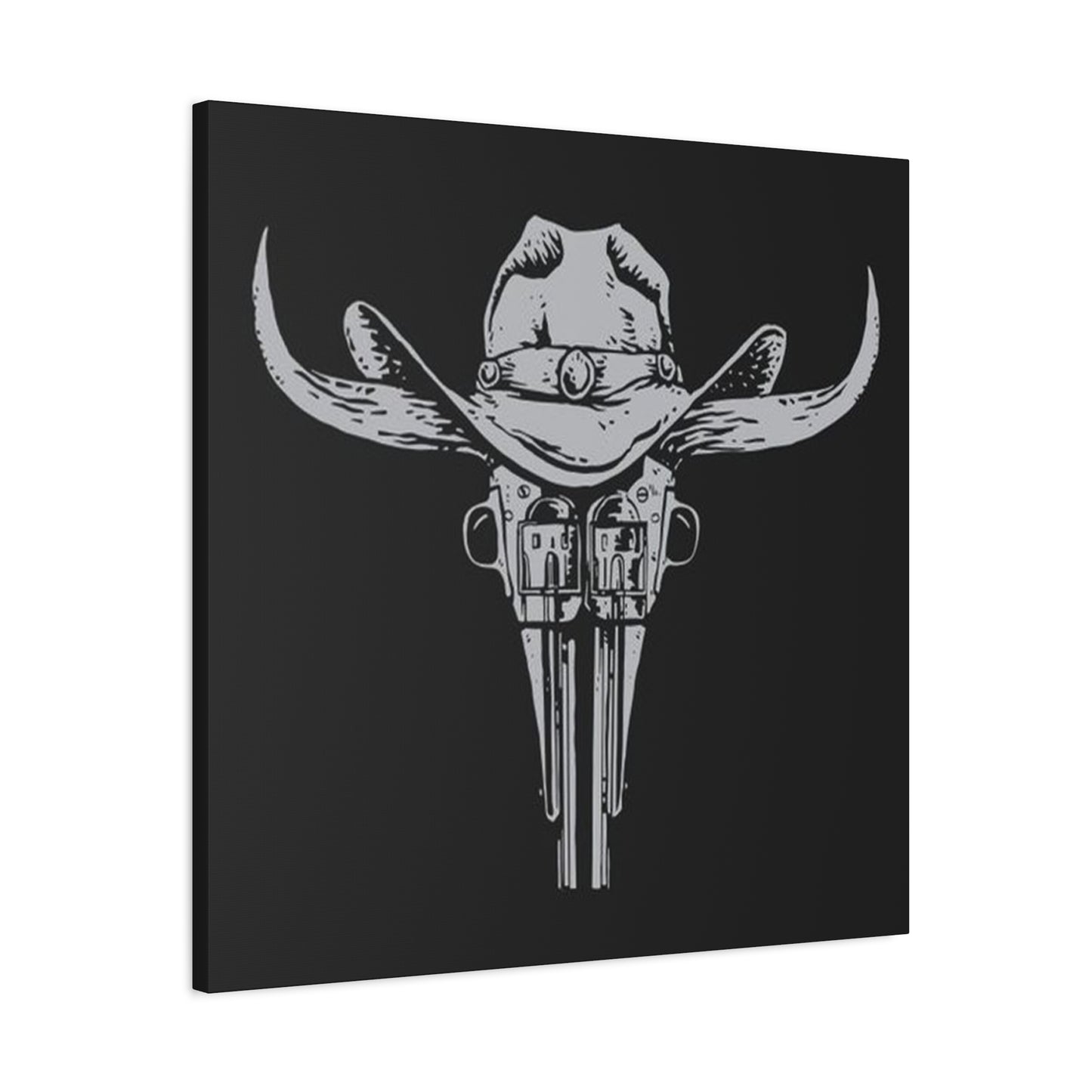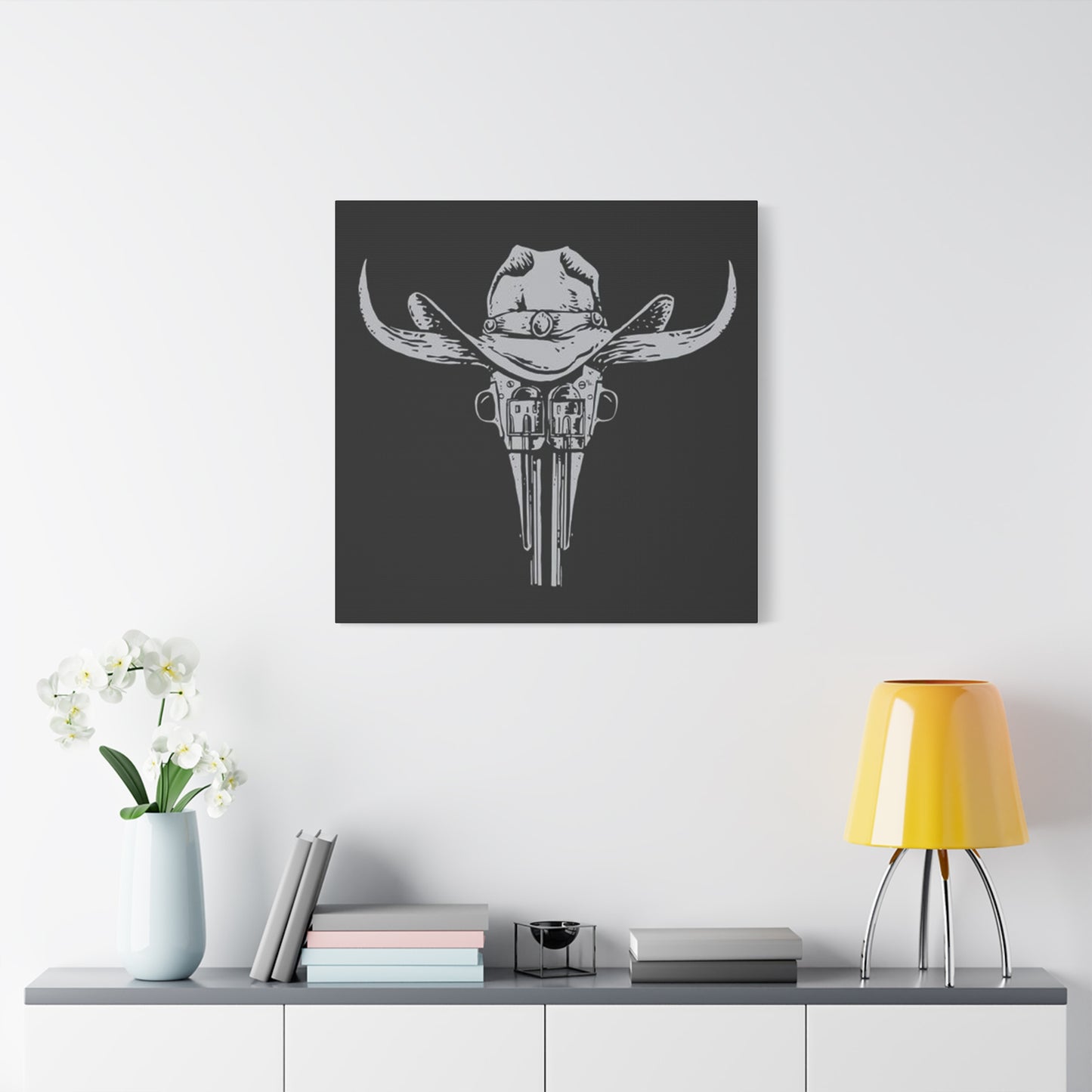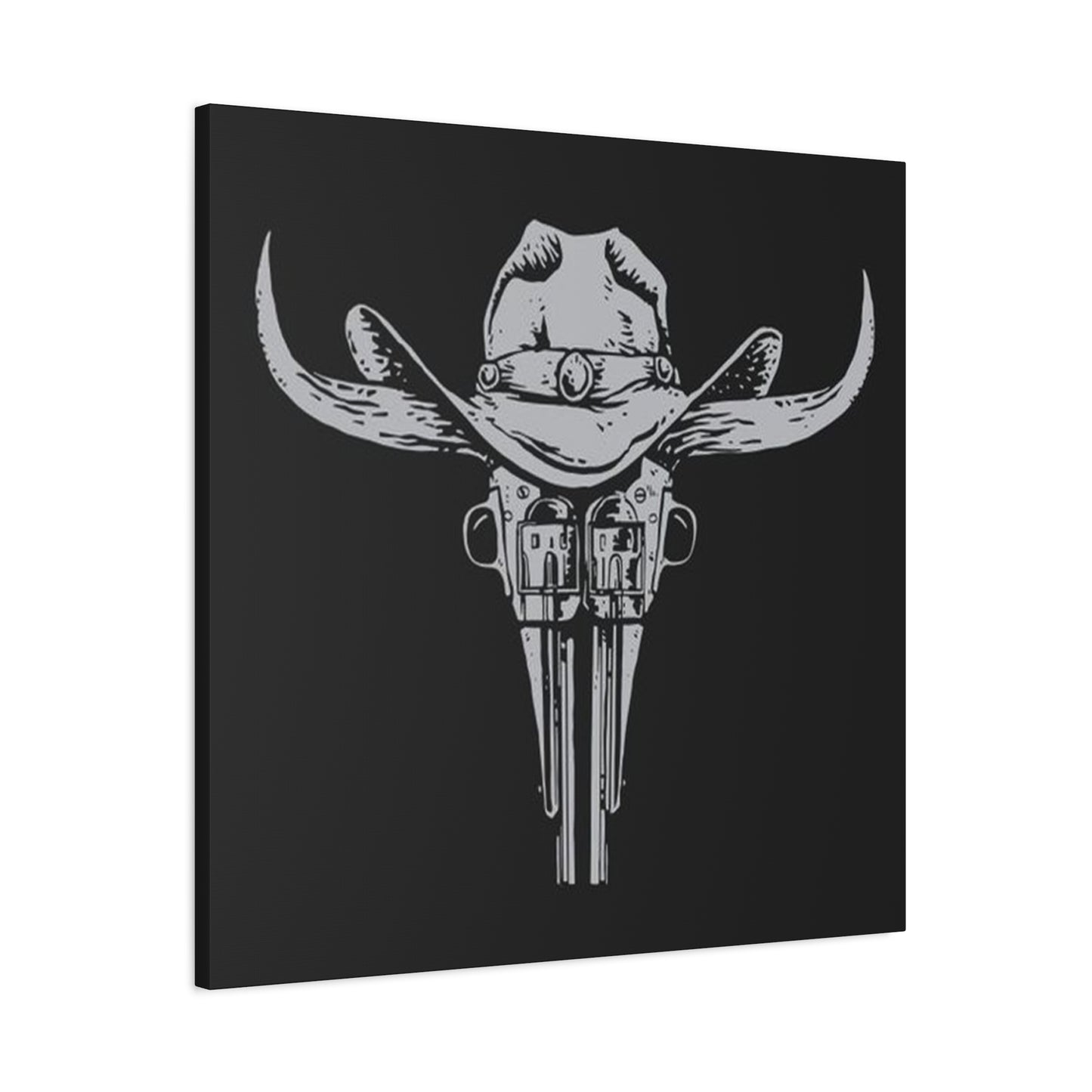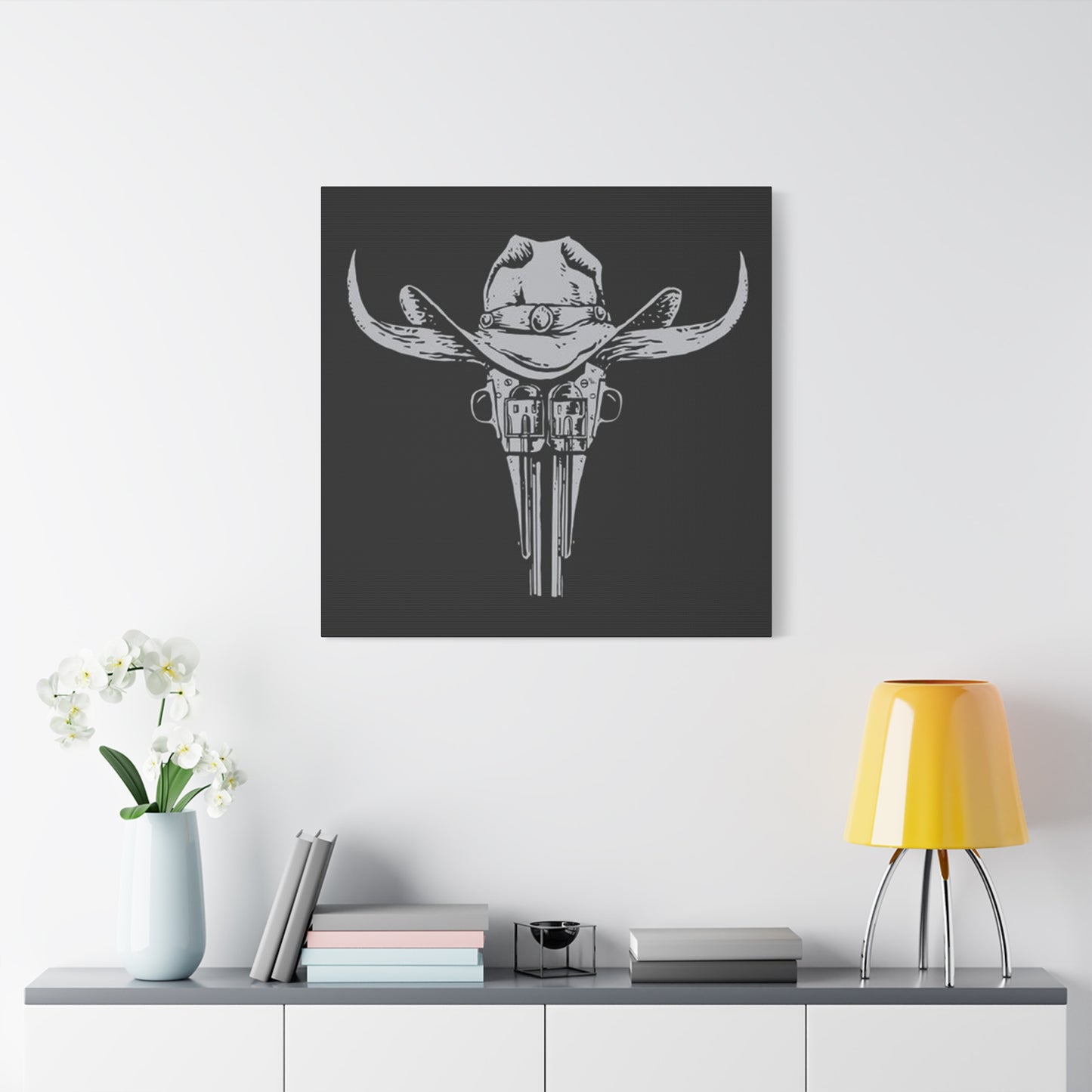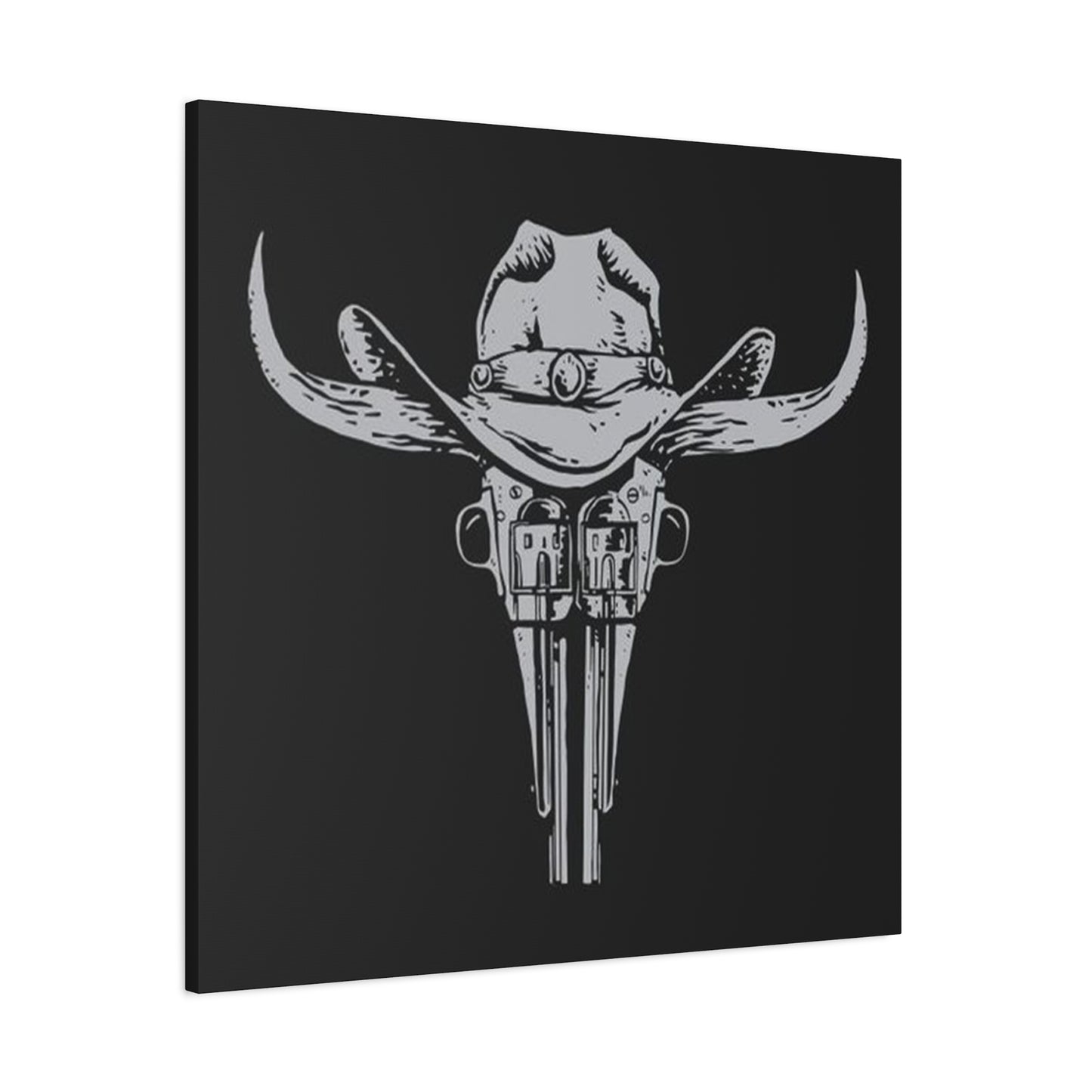The Evolution of Horn Guns Imagery in Modern Wall Art
Horn guns represent one of the most fascinating chapters in the evolution of historical weaponry, and their artistic representation has become increasingly popular among collectors and enthusiasts of vintage decorative pieces. These unique firearms, characterized by their distinctive curved powder horns integrated into the weapon's design, offer a compelling blend of functionality and aesthetic appeal that translates beautifully into wall art. The visual complexity of horn guns, with their intricate metalwork, ornate engravings, and the organic curves of natural horn materials, creates stunning artistic subjects that capture both the craftsmanship of bygone eras and the raw power these weapons once possessed.
The appeal of horn guns in wall art extends far beyond their historical significance. Artists and collectors are drawn to the dramatic silhouettes these weapons create, the way light plays across their varied surfaces, and the stories they tell about human ingenuity and survival. When translated into artistic mediums, horn guns become more than mere weapons; they transform into symbols of adventure, exploration, and the pioneering spirit that defined entire generations. The artistic interpretation of these firearms allows viewers to appreciate their mechanical complexity while removing them from their original violent context, creating pieces that celebrate craftsmanship and historical innovation.
Contemporary artists working with horn guns as subjects often emphasize the contrast between the organic horn components and the manufactured metal parts, creating compositions that explore themes of nature versus technology, tradition versus innovation, and the evolution of human tools. This duality makes horn guns particularly compelling subjects for wall art, as they offer multiple layers of meaning and visual interest. The curved lines of the powder horns provide graceful counterpoints to the angular geometry of barrels and mechanisms, creating naturally balanced compositions that work well in various artistic styles from photorealistic renderings to abstract interpretations.
The growing popularity of horn guns wall art also reflects a broader cultural interest in authentic historical artifacts and the stories they tell. In an increasingly digital world, there is something deeply satisfying about contemplating objects that were crafted by hand, used in real adventures, and bear the marks of human experience. Wall art featuring horn guns taps into this nostalgia while providing a safe and aesthetically pleasing way to engage with historical weaponry. These pieces allow viewers to explore questions about human development, technological progress, and the relationship between tools and their users without the ethical complications of displaying actual weapons.
Exploring the Historical Narrative Behind Horn Guns Drawings
The historical development of horn guns represents a fascinating intersection of practical necessity and artistic craftsmanship that provides rich source material for contemporary wall art. These weapons emerged during the 16th and 17th centuries as firearms technology evolved and hunters, soldiers, and explorers sought more efficient ways to carry their powder supplies. The integration of powder horns directly into the weapon's stock or frame represented a significant innovation that solved practical problems while creating visually distinctive firearms that have captured artistic imagination for centuries.
Early horn guns were primarily developed in European workshops where skilled craftsmen combined traditional gunsmithing techniques with horn-working expertise that had been passed down through generations. The powder horns used in these weapons were typically sourced from cattle, buffalo, or other large animals, and their natural curves and variations ensured that no two horn guns were identical. This uniqueness makes them particularly appealing subjects for artistic interpretation, as each weapon tells its own story through the specific characteristics of its horn components, metalwork, and overall design aesthetic.
The artistic documentation of horn guns through drawings and paintings has been ongoing since these weapons first appeared, with military illustrators, naturalists, and weapon enthusiasts creating detailed studies that captured both their functional aspects and their aesthetic appeal. These historical drawings serve as valuable references for contemporary artists while also providing insight into how these weapons were perceived and valued by the cultures that created them. Many of the finest examples of horn gun artwork were created by military artists who accompanied expeditions and campaigns, documenting the weapons used by various forces and preserving visual records of technological developments.
The transition of horn guns from functional tools to artistic subjects reflects broader changes in how society views historical weapons and their role in cultural heritage. As these firearms became obsolete due to technological advances, their historical and artistic value increased, leading to greater interest in preserving and celebrating their unique characteristics through various art forms. Contemporary wall art featuring horn guns draws upon this rich tradition of artistic documentation while adding modern interpretive elements that speak to current aesthetic preferences and cultural perspectives.
The evolution of horn gun designs across different regions and time periods provides artists with a diverse palette of forms, decorative elements, and cultural contexts to explore. German wheel-lock horn guns differed significantly from Scottish Highland versions, which in turn varied from American frontier adaptations. These regional variations offer artists opportunities to explore not just the weapons themselves, but the cultures and environments that shaped their development, creating layered artworks that function as both aesthetic objects and historical commentaries.
How Horn Guns Art Enhances Vintage Character in Modern Environments
The integration of horn guns wall art into contemporary living environments represents a sophisticated approach to blending historical character with modern aesthetic sensibilities. These pieces offer a unique opportunity to introduce elements of adventure, craftsmanship, and historical intrigue into residential and commercial settings without overwhelming the existing design scheme. The natural earth tones found in horn gun imagery, including the warm browns of aged horn, the deep grays of weathered metal, and the rich patinas of antique finishes, complement a wide range of color palettes and design approaches.
Horn guns wall art works particularly well in environments that celebrate craftsmanship, authenticity, and historical connection. The intricate details visible in these weapons, from hand-engraved metalwork to the natural grain patterns of horn components, add layers of visual interest that reward closer inspection while contributing to an overall sense of quality and permanence. This makes them excellent choices for creating focal points in rooms where conversation and contemplation are encouraged, such as libraries, studies, or gathering areas where guests can appreciate both the artistic merit and historical significance of the pieces.
The versatility of horn guns as artistic subjects allows them to work effectively across various design aesthetics, from traditional and rustic approaches to more contemporary interpretations. In traditional settings, these pieces can reinforce themes of heritage, exploration, and craftsmanship, while in modern environments they provide intriguing contrasts that highlight the evolution of technology and design. The organic curves of the horn components can soften the angular lines common in contemporary architecture, while the mechanical precision of the weapon's construction can add structure and focus to more relaxed decorative schemes.
When selecting horn guns wall art for specific environments, consideration should be given to both the scale and the particular characteristics of the pieces being displayed. Large-scale reproductions work well in expansive rooms with high ceilings, where they can serve as commanding focal points that anchor the entire decorative scheme. Smaller pieces or series of related works can be used to create more intimate displays that encourage closer examination and provide opportunities for layered storytelling through the arrangement of multiple related pieces.
The educational aspect of horn guns wall art also contributes to its appeal in various environments. These pieces naturally generate curiosity and conversation, making them excellent choices for settings where learning and discovery are valued. Museums, educational institutions, and private collections all benefit from the way horn guns artwork can serve as entry points for discussions about history, technology, craftsmanship, and cultural development. The visual appeal of these pieces ensures that they attract attention, while their historical significance provides substantial content for meaningful engagement.
Advanced Artistic Techniques in Horn Guns Drawings
The creation of compelling horn guns drawings requires a sophisticated understanding of both artistic technique and the specific characteristics that make these historical weapons visually distinctive. Artists working in this specialized area must master the challenge of accurately representing the complex interplay between organic horn materials and precisely manufactured metal components, each requiring different approaches to achieve convincing results. The curved surfaces of powder horns present particular challenges in terms of perspective, shading, and texture representation, as their three-dimensional forms must be convincingly rendered on two-dimensional surfaces while maintaining proper proportional relationships to other weapon components.
Successful horn guns drawings typically begin with careful observation and measurement of reference materials, whether working from historical specimens, photographs, or detailed technical drawings. The artist must understand the functional relationships between different parts of the weapon to ensure that mechanical elements are correctly proportioned and positioned. This technical accuracy is essential not only for historical authenticity but also for creating drawings that satisfy knowledgeable viewers who may be familiar with actual horn guns and their construction details.
The rendering of horn textures requires particular attention to the natural characteristics that distinguish genuine horn from synthetic materials. Real horn displays subtle variations in color, translucency, and surface texture that result from its organic origins and the natural processes involved in its formation. Artists must capture these nuances while also showing how horn surfaces respond to light differently than the metal components of the weapon. The natural grain patterns, color variations, and surface imperfections that characterize genuine horn materials contribute significantly to the authentic appearance of the finished artwork.
Metal surfaces in horn guns present their own technical challenges, as different types of metal require different rendering approaches. Steel components may show evidence of age, wear, and oxidation, while brass or bronze elements might display the green patinas characteristic of aged copper alloys. The reflective properties of metal surfaces must be carefully controlled to maintain the overall tonal balance of the composition while still conveying the material characteristics that help identify different weapon components and their conditions.
Advanced horn guns drawings often incorporate environmental elements that provide context for the weapons and enhance their visual impact. These might include period-appropriate accessories such as powder flasks, shot pouches, or cleaning implements, or broader environmental elements such as hunting scenes, military encampments, or workshop settings. The inclusion of such contextual elements requires additional research and artistic skill but can significantly enhance the educational and emotional impact of the finished artwork.
Incorporating Horn Guns Wall Art in Rustic Decorative Schemes
Horn guns wall art finds natural harmony within rustic decorative approaches that celebrate traditional craftsmanship, natural materials, and connections to historical periods when such weapons were common tools of daily life. The aesthetic compatibility between horn guns and rustic environments stems from shared values of functionality, durability, and authentic construction techniques that prioritize effectiveness over purely decorative concerns. The warm earth tones characteristic of aged horn and weathered metal complement the natural wood finishes, stone surfaces, and textile elements commonly found in rustic settings.
The integration of horn guns wall art into rustic environments requires careful consideration of scale, placement, and supporting elements to achieve the most effective results. These pieces work particularly well when displayed against natural wood backgrounds, such as barn wood paneling, log walls, or reclaimed timber surfaces, where the organic character of the horn components can resonate with the natural grain patterns and textures of the wood. The contrast between the smooth, polished surfaces of metal components and the rougher textures of rustic wood creates visual interest while maintaining thematic consistency.
Rustic environments often feature prominent use of natural lighting, whether from large windows, skylights, or carefully positioned artificial sources that mimic natural illumination. Horn guns wall art responds particularly well to this type of lighting, as the varied surfaces and materials in these weapons create interesting shadow patterns and highlight details that might be lost under harsher artificial lighting. The three-dimensional quality of horn guns, even when rendered in two-dimensional artworks, becomes more apparent under natural lighting conditions that create subtle gradations of light and shadow across the composition.
The placement of horn guns wall art within rustic settings should take into account the overall traffic patterns and sight lines of the room to ensure that these pieces can be properly appreciated without interfering with the functional use of the area. Rustic environments often feature gathering areas where people sit around fireplaces, large tables, or other central focal points, and horn guns artwork can be positioned to be visible from these seating areas while not competing with the primary architectural features of the room.
Supporting elements and accessories can significantly enhance the impact of horn guns wall art in rustic settings. Period-appropriate items such as antique lanterns, vintage hunting equipment, historical documents, or related artifacts can create thematic groupings that reinforce the historical connections and cultural context of the weapons. However, care must be taken to avoid overcrowding displays or creating arrangements that appear more like museum exhibits than integrated decorative elements. The goal is to create environments that feel authentic and lived-in rather than artificially constructed for display purposes.
Merging Horn Guns Drawings with Contemporary Architectural Elements
The successful integration of horn guns wall art into contemporary architectural environments requires a nuanced understanding of how historical subjects can complement modern design principles while maintaining their inherent character and visual impact. Contemporary settings present unique opportunities and challenges for displaying horn guns artwork, as the clean lines, neutral color palettes, and minimalist approaches common in modern design can either provide striking contrasts that enhance the historical character of the weapons or create conflicts that diminish the effectiveness of both elements.
Modern architectural environments often feature large expanses of neutral-colored walls that can serve as excellent backgrounds for horn guns wall art, allowing the intricate details and rich textures of these weapons to stand out clearly without competing with busy patterns or strong colors. The geometric precision of contemporary design elements can create interesting dialogues with the organic curves of horn components and the functional aesthetics of historical weapon design, highlighting both the evolution of human design approaches and the enduring appeal of well-crafted objects.
The scale relationships between horn guns artwork and contemporary architectural elements require careful consideration to achieve harmonious results. Modern rooms often feature higher ceilings and more open floor plans than historical environments, which can dwarf smaller artworks or make standard-sized pieces appear insignificant. Conversely, oversized horn guns reproductions might overwhelm intimate contemporary environments or conflict with the refined proportions that characterize successful modern design. Finding the appropriate scale requires balancing the visual weight of the artwork with the architectural context in which it will be displayed.
Contemporary lighting systems offer unprecedented control over how horn guns wall art is illuminated and perceived, allowing for dramatic effects that would have been impossible in historical settings. Modern track lighting, adjustable spotlights, and LED systems can be precisely positioned to highlight specific details within horn guns compositions while controlling ambient lighting levels to create appropriate viewing conditions. The ability to adjust lighting throughout the day or for different occasions allows horn guns artwork to function effectively in multipurpose contemporary environments.
The material palette commonly found in contemporary environments, including glass, steel, concrete, and engineered surfaces, creates interesting contrasts with the natural materials depicted in horn guns artwork. These contrasts can be used to emphasize the handcrafted character of historical weapons while highlighting the technological sophistication of contemporary construction techniques. The key is to manage these relationships so that they feel intentional and complementary rather than accidental or conflicting.
The Cultural Symbolism of Horn Guns in Artistic Expression
Horn guns carry complex layers of cultural symbolism that extend far beyond their functional origins as hunting and military weapons, making them rich subjects for artistic exploration and interpretation. The integration of natural horn materials with manufactured metal components creates powerful metaphors for the relationship between humanity and nature, traditional craftsmanship and industrial production, and the evolution of human tools and technology. Artists working with horn guns as subjects often explore these symbolic dimensions, creating works that comment on broader cultural themes while celebrating the aesthetic appeal of these unique weapons.
The horn components of these weapons connect them to agricultural and pastoral traditions that have shaped human civilization for millennia. Horns have long been associated with abundance, strength, and the successful domestication of animals for human benefit. When incorporated into weapon designs, these associations carry forward, suggesting connections between military or hunting prowess and the fundamental agricultural skills that enabled stable human settlements. This symbolism makes horn guns particularly resonant subjects for artwork that explores themes of human development, cultural continuity, and the relationship between different aspects of traditional life.
The craftsmanship evident in well-made horn guns represents values that have become increasingly rare in contemporary mass-produced culture. The time, skill, and attention to detail required to create these weapons speaks to approaches to work and creation that prioritized quality, durability, and individual expression over efficiency and standardization. Artists often use horn guns as symbols of these disappearing values, creating works that celebrate traditional craftsmanship while commenting on the losses associated with industrial and digital production methods.
The military and hunting associations of horn guns connect them to broader themes of human survival, competition, and the relationship between civilization and wilderness. These weapons represent tools that enabled human expansion into new territories, successful competition with both animal predators and human adversaries, and the development of skills and technologies that became foundations for more complex cultural achievements. Artistic interpretations of horn guns often explore these themes, using the weapons as starting points for broader meditations on human nature, cultural development, and the ongoing tension between civilization and wildness.
The obsolescence of horn guns in contemporary military and hunting contexts adds additional layers of symbolic meaning that artists can explore. These weapons represent technologies that were once cutting-edge innovations but have been superseded by more advanced alternatives, making them symbols of technological change, cultural evolution, and the inevitable passage of time. This temporal dimension makes horn guns particularly effective subjects for artwork that deals with themes of memory, loss, heritage preservation, and the relationship between past and present.
Professional Framing Approaches for Horn Guns Drawings
The framing of horn guns wall art requires specialized knowledge and attention to both preservation concerns and aesthetic considerations that will enhance the visual impact of these historically-themed pieces. The complex shapes and proportions typical of horn guns artwork present unique challenges for framing professionals, as standard rectangular formats may not optimally showcase the curved lines and extended forms that characterize these weapons. Custom framing solutions often provide the best results, allowing for precise control over matting, mounting, and frame proportions that complement the specific characteristics of each piece.
Matting selections for horn guns artwork should take into account both the historical period being represented and the intended display environment. Traditional cream or off-white mats work well with pieces that emphasize historical authenticity, as these colors complement the aged patinas and warm tones commonly found in vintage weapon finishes. However, contemporary display environments might benefit from more neutral gray mats that provide sufficient contrast to highlight details while harmonizing with modern color schemes. The width of mat borders should be proportioned to balance the composition and provide appropriate visual breathing room around the artwork without overwhelming smaller pieces or appearing inadequate for larger compositions.
Mounting techniques for horn guns artwork must address the preservation requirements of the specific medium being framed while providing stable support that prevents damage over time. Works on paper require acid-free mounting boards and hinging techniques that allow for natural expansion and contraction while preventing cockling or waviness that could detract from the artwork's appearance. Original drawings or limited-edition prints may require museum-quality mounting materials and techniques to ensure long-term preservation, while reproduction pieces might be handled with less stringent conservation requirements.
Frame style selections should complement both the historical character of the horn guns subjects and the architectural context in which the pieces will be displayed. Traditional gold or silver leaf frames can enhance the historical associations of horn guns artwork while providing elegant presentations that work well in formal environments. Wood frames in appropriate finishes can reinforce connections to traditional craftsmanship and natural materials, particularly in rustic or traditional decorative schemes. Contemporary metal frames might be appropriate for modern environments where the contrast between historical subjects and contemporary presentation creates intended aesthetic tension.
The glazing choices for horn guns wall art affect both preservation and viewing quality, requiring careful consideration of the specific requirements of each piece and its intended display location. Museum-quality UV-filtering glass provides the best protection for valuable original works while maintaining excellent optical clarity. Anti-reflective treatments can significantly improve viewing quality in environments with challenging lighting conditions, though they may add cost and complexity to the framing process. Acrylic glazing materials offer weight advantages and increased safety in some applications, though they require special handling to avoid scratching during installation and maintenance.
Monochromatic Horn Guns Art for Minimalist Wall Treatments
Black and white horn guns artwork offers unique advantages for minimalist decorative approaches that prioritize clean lines, simplified color schemes, and focus on form and composition over decorative detail. The removal of color information from horn guns imagery forces viewers to concentrate on the essential shapes, textures, and proportional relationships that make these weapons visually compelling, often revealing design elements that might be overlooked in full-color representations. This reduction to tonal values creates opportunities for sophisticated visual effects while maintaining compatibility with minimalist design principles.
The tonal range available in monochromatic horn guns artwork allows for subtle gradations that can create depth, dimension, and material differentiation without relying on color cues. The contrast between the smooth surfaces of polished metal components and the textured characteristics of horn materials becomes more apparent when rendered in grayscale, as viewers must rely on tonal variations and surface treatments to distinguish between different materials and their conditions. This enhanced focus on texture and form can reveal aspects of horn guns design that are less obvious in color renditions.
Minimalist environments often feature neutral color palettes dominated by whites, grays, and blacks, making monochromatic horn guns artwork natural complements to these schemes. The absence of competing colors allows black and white pieces to integrate seamlessly into minimalist decorative approaches while still providing visual interest and focal points that prevent environments from becoming sterile or unengaging. The historical character of horn guns subjects can add layers of cultural depth to minimalist environments without disrupting their essential aesthetic principles.
The graphic quality of high-contrast black and white horn guns artwork can create striking visual statements that work particularly well in contemporary minimalist environments. Bold compositions that emphasize the silhouettes and geometric relationships within horn guns designs can function almost as abstract artworks while maintaining their representational character and historical associations. This dual nature makes them effective choices for environments where both artistic sophistication and cultural content are valued.
The production and presentation options for black and white horn guns artwork offer flexibility that can accommodate various budget levels and aesthetic preferences. High-quality photographic reproductions, fine art prints, and original drawings all translate well to monochromatic treatments, allowing collectors to choose approaches that match their resources and collecting goals. The simplified color requirements also make these pieces easier to integrate into existing collections and decorative schemes, as they are less likely to conflict with other artworks or environmental elements.
Budget-Conscious Horn Guns Prints for Art Collectors
The growing interest in horn guns wall art has created opportunities for collectors to acquire pieces at various price points, from museum-quality original drawings to affordable reproduction prints that make this specialized art form accessible to broader audiences. Digital printing technologies have revolutionized the production of high-quality horn guns reproductions, allowing for detailed renditions that capture the essential character of these weapons while remaining within reach of budget-conscious collectors. Understanding the various options available and their relative merits enables collectors to make informed decisions that balance quality, authenticity, and cost considerations.
Print-on-demand services have made it possible for artists specializing in horn guns subjects to offer their work in multiple formats and sizes without the significant upfront costs associated with traditional limited-edition printing. This technology allows collectors to purchase prints in standard sizes that fit common framing options, reducing the overall cost of acquisition and presentation while still obtaining quality reproductions suitable for display. Many artists now offer their horn guns artwork through online platforms that provide professional printing and shipping services, eliminating many of the barriers that previously limited access to specialized artwork.
The evaluation of affordable horn guns prints requires attention to print quality, paper selection, and reproduction accuracy to ensure satisfactory results for display purposes. Archival-quality papers and pigment-based inks provide longevity and color stability that justify slightly higher costs, while standard papers and dye-based inks might be adequate for shorter-term display or less critical applications. Understanding these technical differences enables collectors to make appropriate choices based on their specific needs and display environments.
Series purchases and group exhibitions offer additional opportunities for budget-conscious collectors to acquire horn guns artwork while building coherent collections that have greater visual impact than individual pieces. Many artists offer discounts for multiple purchases, and collecting focused themes or time periods can create more sophisticated displays while potentially reducing per-piece costs. Group purchasing arrangements and collector cooperatives provide additional avenues for accessing higher-quality pieces that might otherwise be beyond individual budget limits.
The secondary market for horn guns artwork includes both original pieces and reproduction prints that can offer value opportunities for knowledgeable collectors. Estate sales, auction houses, and specialized dealers occasionally offer horn guns artwork at prices below retail levels, though success in these venues requires knowledge of artists, printing techniques, and market values to avoid overpaying or purchasing pieces of inadequate quality. Building relationships with dealers and other collectors can provide access to pieces that are not widely advertised and create opportunities for favorable purchase arrangements.
Creating Dramatic Focal Points with Horn Guns Drawings
The strategic use of horn guns wall art to create commanding focal points within residential and commercial environments requires careful consideration of scale, placement, positioning, and supporting elements that enhance the visual impact of these historically significant pieces. The inherent drama of horn guns subjects, with their combination of elegant curves, mechanical precision, and cultural associations, makes them natural candidates for focal point applications when properly integrated into overall design schemes. Successfully creating dramatic focal points with horn guns artwork involves understanding both the specific characteristics of the pieces being used and the architectural and decorative contexts in which they will be displayed.
Scale relationships play crucial roles in establishing horn guns artwork as effective focal points, as pieces must be appropriately sized for their intended environments while maintaining proper proportional relationships with surrounding architectural and decorative elements. Oversized horn guns reproductions can create commanding presence in large rooms with high ceilings, where they can anchor entire decorative schemes and provide visual weight that balances other significant design elements. Conversely, smaller pieces may be more appropriate for intimate environments where dramatic effect can be achieved through careful positioning and lighting rather than sheer size.
The positioning of horn guns wall art within architectural environments significantly affects their ability to function as focal points, with considerations including viewing angles, sight lines, furniture arrangements, and traffic patterns. Placing horn guns artwork at eye level for typical viewers ensures optimal visual engagement, while positioning pieces where they can be seen from multiple vantage points throughout the room extends their influence and creates more comprehensive focal effects. The relationship between horn guns artwork and other room elements such as fireplaces, windows, or architectural features must be carefully managed to avoid competition for visual attention.
Lighting design plays essential roles in establishing and maintaining the focal point status of horn guns wall art, as proper illumination can dramatically enhance the three-dimensional qualities, surface textures, and detail work that make these pieces visually compelling. Dedicated artwork lighting systems allow for precise control over illumination levels, beam angles, and color temperatures that optimize the appearance of horn guns compositions while creating appropriate contrast with surrounding areas. The interplay between direct artwork lighting and ambient room lighting creates depth and hierarchy that supports focal point functions.
Supporting design elements can significantly amplify the focal point impact of horn guns wall art when carefully selected and positioned to complement rather than compete with the primary pieces. Complementary color schemes, furniture arrangements that direct attention toward the artwork, and architectural treatments that frame or highlight the display areas all contribute to successful focal point creation. The key is maintaining appropriate balance between enhancement and restraint, ensuring that supporting elements strengthen the impact of the horn guns artwork without overwhelming their visual presence or cultural significance.
Horn Guns Art Influenced by Historical Firearms Development
The artistic representation of horn guns offers unique opportunities to explore the broader history of firearms development, technological innovation, and the cultural contexts that shaped the evolution of these distinctive weapons. Artists working in this specialized area often draw upon extensive historical research to ensure accuracy in their depictions while also exploring the aesthetic and symbolic dimensions that make horn guns compelling subjects for contemporary audiences. The intersection between historical documentation and artistic interpretation creates works that function simultaneously as educational resources and aesthetic objects.
The developmental timeline of horn guns spans several centuries and multiple geographic regions, providing artists with diverse source materials that reflect different approaches to weapon design, manufacturing techniques, and decorative traditions. Early European examples from the 16th and 17th centuries demonstrate the integration of powder horn technology with existing firearm designs, while later American frontier adaptations show how practical needs and available materials influenced the evolution of these weapons. Understanding these historical progressions enables artists to create works that accurately represent specific periods and regional characteristics.
Regional variations in horn guns design reflect broader cultural differences in craftsmanship traditions, available materials, and intended uses that provide rich source material for artistic exploration. German wheel-lock mechanisms required different manufacturing techniques than English flintlock systems, while American frontier conditions led to adaptations that prioritized durability and ease of maintenance over decorative refinement. These regional characteristics offer artists opportunities to explore not just the weapons themselves, but the cultures and environments that shaped their development.
The documentation of horn guns in historical contexts often includes detailed technical drawings, patent records, military specifications, and manufacturing instructions that provide valuable reference materials for contemporary artists. Many museums and historical societies maintain collections of these documents, along with examples of actual weapons that can serve as models for artistic interpretation. Access to these resources enables artists to create works that maintain historical accuracy while exploring the aesthetic potential of these unique weapons.
The technological innovations represented by horn guns reflect broader developments in metallurgy, manufacturing techniques, and design approaches that influenced many other aspects of material culture during their periods of use. Artists exploring horn guns subjects often discover connections to other technological developments, decorative traditions, and cultural movements that enrich their understanding and interpretation of these weapons. These broader connections create opportunities for artwork that explores horn guns within larger contexts of human development and cultural change.
The Significance of Horns and Firearms in Artistic Heritage
The combination of organic horn materials with manufactured firearm components in horn guns creates unique artistic subjects that bridge natural and technological elements in ways that have fascinated artists and craftsmen for centuries. The artistic tradition surrounding horn guns extends beyond mere documentation of these weapons to include explorations of the symbolic relationships between their constituent materials, the cultural contexts in which they were created and used, and their continuing relevance as symbols of human ingenuity and adaptation.
The use of animal horns in weapon construction connects horn guns to much older traditions of utilizing natural materials for tools and weapons that predate the development of gunpowder technology by millennia. Artists exploring horn guns subjects often investigate these deeper connections, creating works that trace the evolution of human tool-making and the continuing dialogue between natural resources and manufactured objects. The grain patterns, color variations, and structural characteristics of horn materials provide endless variation and individual character that distinguish each weapon and create unique artistic opportunities.
The integration of horn and metal components in these weapons required specialized knowledge and techniques that represented significant technological achievements in their time. The challenges of securely joining organic and inorganic materials, managing different expansion rates and aging characteristics, and creating functional mechanisms that could withstand the stresses of repeated use all contributed to the development of sophisticated manufacturing approaches that influenced broader technological development.
The decorative traditions associated with horn guns often included elaborate engraving, carving, and surface treatments that elevated these weapons beyond mere functional tools into objects of artistic merit. Many examples feature intricate metalwork, carved horn surfaces, and additional decorative elements that demonstrate the skill and aesthetic sensibilities of their creators. Contemporary artists exploring horn guns subjects often focus on these decorative elements, using them as starting points for broader explorations of historical artistic traditions and their continuing relevance.
The cultural contexts in which horn guns were created and used provide additional layers of meaning that enrich their artistic interpretation. These weapons were often associated with specific social classes, professional groups, or geographic regions, and understanding these associations enables artists to create works that explore broader themes of identity, status, and cultural belonging. The stories associated with individual weapons, including their ownership histories and documented uses, provide narrative elements that can inform and inspire artistic interpretation.
Combining Horn Guns Drawings with Complementary Vintage Art
The successful integration of horn guns wall art with other vintage and historical artworks requires careful consideration of thematic relationships, stylistic compatibility, and visual balance to create cohesive displays that enhance the impact of all included pieces. Horn guns artwork often works particularly well when combined with other subjects that share historical periods, cultural contexts, or aesthetic approaches, creating thematic groupings that tell more complete stories about specific times, places, or activities than individual pieces could accomplish alone.
Military and hunting themes provide natural companions for horn guns artwork, as these weapons were primarily associated with these activities throughout their periods of active use. Portraits of hunters or soldiers, depictions of military encampments, hunting scenes, and related equipment all share cultural contexts with horn guns that create logical thematic connections. The challenge lies in balancing these relationships so that the groupings feel intentional and sophisticated rather than merely documentary or museum-like in their approach.
The craftsmanship evident in well-made horn guns connects them to broader traditions of handmade objects and traditional manufacturing techniques that can be explored through combinations with artwork depicting other examples of historical craftsmanship. Depictions of blacksmith shops, woodworking tools, traditional textiles, or other handmade objects from similar periods can create displays that celebrate traditional skills and manufacturing approaches while highlighting the aesthetic achievements these traditions produced.
The aesthetic compatibility between horn guns artwork and other vintage pieces depends partly on shared approaches to composition, color, and subject matter that create visual harmony within grouped displays. Pieces that share similar color palettes, tonal ranges, or compositional approaches often work well together regardless of their specific subjects, while dramatic differences in these elements can create jarring effects that diminish the impact of all included works. Understanding these relationships enables collectors to create groupings that feel coherent and intentional.
The practical considerations of combining horn guns artwork with other vintage pieces include factors such as scale relationships, framing compatibility, lighting requirements, and placement logistics that affect both the visual success and the practical feasibility of grouped displays. Pieces that require similar viewing distances, lighting conditions, and environmental controls are easier to display together effectively, while works with dramatically different requirements may need to be separated even when they share thematic or aesthetic relationships.
Utilizing Horn Guns Wall Art in Masculine Retreats and Private Studies
Horn guns wall art finds particularly appropriate applications in masculine retreat environments such as private studies, libraries, workshops, and recreational areas where the historical associations and aesthetic character of these weapons resonate with traditional concepts of male domains and activities. The combination of mechanical precision, historical significance, and cultural associations with hunting, military service, and traditional craftsmanship makes horn guns artwork natural choices for environments that celebrate these themes and values.
The design characteristics of typical masculine retreat environments often complement the aesthetic qualities of horn guns artwork through shared emphasis on natural materials, earth-tone color palettes, and furnishings that prioritize functionality and durability over purely decorative considerations. The warm browns of aged horn materials, the deep grays of weathered metal, and the rich patinas characteristic of antique weapons harmonize naturally with leather furniture, wood paneling, stone surfaces, and other materials commonly found in these environments.
The scale and proportions of horn guns artwork make these pieces particularly suitable for the larger wall areas commonly available in studies, libraries, and recreational rooms, where they can serve as commanding focal points that anchor entire decorative schemes. The horizontal orientation characteristic of most firearms provides excellent balance for wide wall areas above fireplaces, bookcases, or seating arrangements, while their detailed character rewards the closer inspection possible in intimate environments designed for reading, contemplation, or conversation.
The educational and conversational value of horn guns artwork enhances its suitability for study and library environments where intellectual curiosity and historical interests are celebrated. These pieces naturally generate questions about historical periods, technological development, cultural practices, and artistic traditions that can lead to engaging discussions and further research. The visual complexity and historical significance of horn guns provide substantial content for meaningful engagement with visitors and family members.
The integration of horn guns wall art with other elements commonly found in masculine retreat environments, including book collections, vintage sporting equipment, traditional tools, and related historical artifacts, can create thematic displays that reinforce the educational and cultural functions of these rooms. The key is maintaining appropriate balance between different elements to ensure that the environment feels comfortable and functional rather than overly museumlike or cluttered with competing displays.
The Contemporary Renaissance of Antique Weapon Art in Modern Decor
The growing popularity of antique weapon artwork, including horn guns representations, reflects broader cultural trends toward authenticity, craftsmanship appreciation, and historical connection that have emerged in response to increasingly digital and mass-produced contemporary environments. This renaissance encompasses not only traditional collectors and history enthusiasts but also younger demographics seeking to incorporate elements of substance, permanence, and cultural depth into their living and working environments.
The aesthetic appeal of antique weapon artwork extends beyond mere historical interest to include appreciation for the design principles, manufacturing techniques, and artistic traditions that these objects represent. Horn guns and similar weapons embody approaches to problem-solving, material usage, and aesthetic integration that offer alternatives to contemporary design philosophies dominated by planned obsolescence, synthetic materials, and automated production processes. This contrast creates opportunities for meaningful dialogue between historical and contemporary values.
Contemporary interior design approaches increasingly value unique, authentic elements that provide counterpoints to mass-produced furnishings and decorative accessories. Antique weapon artwork, particularly pieces like horn guns that combine functional design with artistic merit, offers opportunities to introduce distinctive elements that cannot be duplicated through mass production. The individual character of each weapon, resulting from handcrafted construction and unique material characteristics, ensures that artwork based on these subjects maintains similar uniqueness and authenticity.
Final Thoughts
Horn guns wall art offers a unique and captivating way to blend history with modern interior design. These artistic representations of historical weaponry—crafted with intricate detail and often featuring the distinctive textures and shapes of traditional horn guns—bring a bold and fascinating narrative to your walls. For enthusiasts of history, craftsmanship, or simply distinctive décor, horn guns art creates a striking statement that combines cultural heritage with contemporary style.
What makes horn guns wall art truly special is its ability to evoke a sense of time and place, transporting viewers to eras when such weapons played significant roles in defense, hunting, and identity. These pieces often highlight the craftsmanship involved in creating horn guns, emphasizing textures, patterns, and materials that speak to a rich past. This historical depth adds layers of meaning to your décor, making the art not just decorative but also educational and thought-provoking.
In contemporary interiors, horn guns wall art stands out as a conversation starter and a symbol of boldness. Whether displayed in a living room, study, or gallery wall, these artworks add an edge that contrasts beautifully with modern furniture and clean lines. They can complement industrial, rustic, or eclectic styles, bringing a rugged elegance that balances refinement with raw historical intrigue.
Additionally, horn guns art connects collectors and homeowners with stories of tradition, resilience, and craftsmanship. It’s a reminder of how artistry and function once converged in weaponry, showcasing the human ability to create objects of both beauty and utility.
Ultimately, horn guns wall art is a powerful fusion of past and present, ideal for those who appreciate history and desire décor that is rich in character and meaning. It’s an exceptional choice for elevating your space with pieces that inspire curiosity and admiration.





















